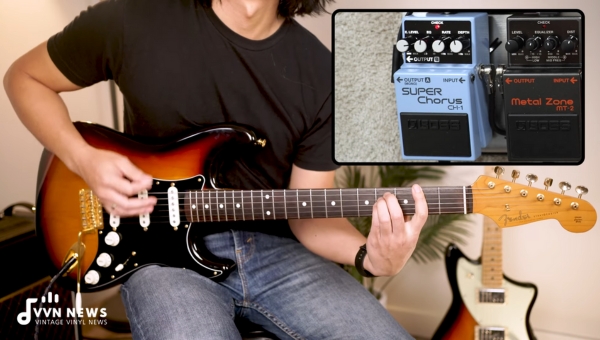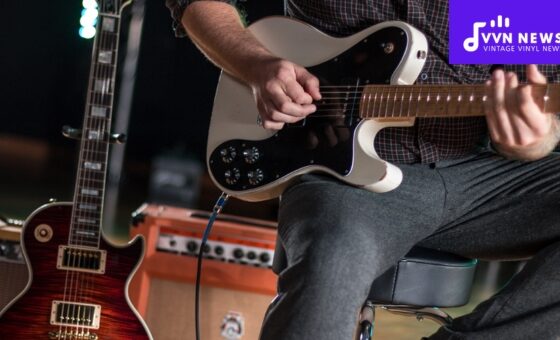As a guitarist, there’s something incredibly satisfying about the perfect blend of precision and artistry, a sweet spot that can often be found through exploring the vast world of effects.
There are certainly limitless ways to shape a guitar’s tone, but perhaps none is as impactful or crucial as the use of guitar pedals.
As I walk you through different types of guitar pedals, you’ll quickly realize that each one offers its unique flavor and touch.
Some are like the salt and pepper of sound, adjusting brightness or darkness, while others are far more dramatic.
We all know that feeling when we hit that elusive chord and close our eyes, lost in the sheer beauty of music.
In these instances, it’s often not merely a guitar performing; there lies an invisible ally assisting us in creating those breathtaking tones – our dear friend, the guitar pedal.
From distortion and overdrive to chorus and reverb, guitar pedals can turn your instrument into nearly anything you can imagine. So, let’s dive into this exciting array.
What are Guitar Pedals?
Guitar pedals, also known as effects pedals or stompboxes, are little electronic devices that alter the sound of your guitar in a variety of ways. They play a pivotal role in defining your tone.
Typically, guitar pedals are placed on the floor and activated with your foot, hence the term ‘stompbox’. Each pedal comes with one or more dedicated knobs that allow you to control the intensity and nature of the effects.
Guitar players arrange these pedals in an order called a “signal chain” between their guitars and their amplifiers.
The signal chain impacts the original guitar sound and makes it either dirty, delayed, modulated, or pitch-altered based on the type of pedal used.
To use one, you simply plug your guitar into the pedal using a standard instrument cable, then plug another cable from the pedal into your amplifier.
When you want to activate (or bypass) the effect, you just press down with your foot on the switch—hence ‘stompbox’.
Remember that each pedal offers its own unique set of features and functionalities that can greatly influence how your music sounds.
Also Read: 24 Best Chorus Pedals In 2025 [Deliver A Rich & Wide Guitar Sound]
Importance of Guitar Pedals

Guitar pedals are much like a painter’s use of various colors and techniques. They give you the ability to express your unique music ideas and individuality more vividly.
Here’s what makes them such an essential part of your sound palette.
Expressive Potential
Guitar pedals can enrich your musical expression immensely. Just as a painter uses different brush strokes and colors to evoke emotions, guitarists can use these stompboxes to manipulate sounds that inspire various emotional responses.
Sound Diversity
They also enhance sound diversity. Imagine being able to transition from a clean, chiming tone into a warm, crunchy distortion with just a foot tap. Or envisage soaring from earth-rumbling bass tones to angelic high notes by simply adjusting the pedal settings.
Creative Exploration
Guitar pedals also open the door for creative exploration, offering a myriad of sonic atmospheres that would be impossible to achieve otherwise. This means you can craft any kind of tone—from traditional and authentic ones like blues or rock ‘n’ roll to experimental and edge-cutting effects for more modern genres.
Practical Considerations
On a practical level, using pedals can save you from bringing multiple amps or guitars to gigs. This way, you’ll have access to an array of sounds without needing an extra set of hands or more gear.
Guitar pedals offer a world full of creative possibilities that allow you greater freedom as an artist. By adding depth, variety, and personality to your performance, these magical little boxes bring your music to life in ways otherwise unimaginable.
Types of Guitar Pedals
From raw power to delicate ambiance, guitar pedals cover a broad spectrum of effects. Let’s take a deeper look at the most common types and their sonic impacts.
Distortion
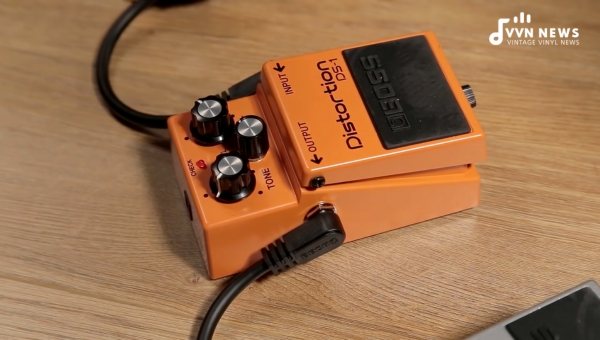
The distortion pedal is one of the oldest and most essential elements in the arsenal of a guitarist.
It fully saturates the signal, providing a gritty, dirty, and fuzzy sound that’s steeped in personality. You can imagine it as cranking up your little amp to 10, pushing it until it can’t go any further.
From the roaring wall of sound in rock music to the bite in certain jazz lines, distortion is everywhere.
There are different types of distortion including fuzz, overdrive, and classic distortion. Each has its characteristic sound due to different levels of gain applied by these pedals.
Delay
Delay pedals are described effectively as an echo effect. They take the original signal from your guitar and replay it later at a specific interval. The beauty lies in its simplicity but the depth is in tweaking.
You can manipulate this repeat (delay) with multiple factors, like the time between each echo, how loud each subsequent echo is, or even how many repeats you hear.
This creates an illusion of multiple instruments being played together when you’re just playing one note or chord.
Chorus
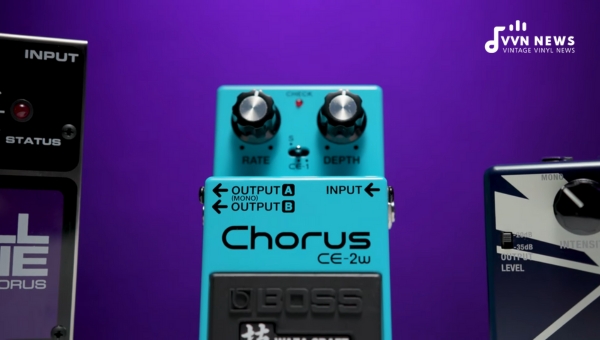
Professional musicians regard the chorus as the secret weapon for creating rich, spacious sounds. The chorus effect pedal duplicates your guitar signal, alters its pitch and time slightly then mixes it back with your original signal.
The magic happens when these tiny delays interact with each other which results in a shimmering effect often compared to a choir or string ensemble, hence ‘chorus’.
Through various chorus pedals, you can adjust things like rate (speed), depth (how noticeable the effect is), and level (the mix between dry and effected signals).
Also Read: What Is Reverb? [An In-Depth Guide For Audio Enthusiasts]
Reverb
Much like how architecture influences our perception of sound in a hall, a reverb pedal simulates those natural vibrations. By adding decay or “sustain” to your guitar’s tone, reverb gives an ethereal presence to any performance.
You’ll find settings on reverb pedals such as room, hall, spring, or plate that are designed to imitate different types of spaces typically used for recording live music for their acoustic properties.
This serves as essential for creating atmospheric depth or giving your solo performances more layered complexity.
Fuzzbox
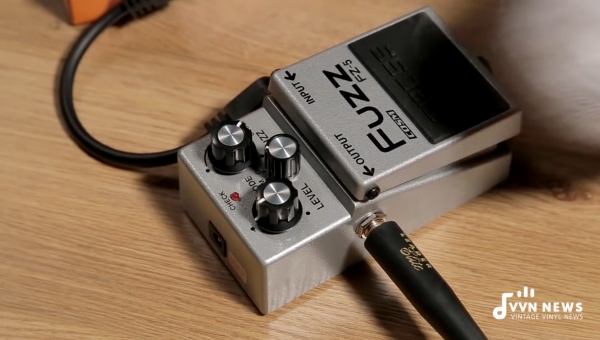
Undoubtedly one of the rawest forms in tone effects, the Fuzzbox, or simply ‘Fuzz’, takes distortion to an extreme level.
It heavily distorts and clips the guitar’s sound, creating a buzzy, fuzzy, and sustained tone. This clipping function produces a waveform described as more square than sine, really pushing your amplifier to its limits.
The Fuzz effect is characterized by its thick and wooly texture and it can give your guitar a warm vintage tone that is associated with classic rock music of the sixties.
Noted examples include Jimi Hendrix’s “Purple Haze” or Keith Richards’s “(I Can’t Get No) Satisfaction”.
One of the most popular fuzz pedals on the market is the Big Muff Pi by Electro-Harmonix. This pedal features knobs for volume, tone, and sustain to shape your perfect fuzzy dream.
Wah-Wah
You’re playing your favorite guitar riff and suddenly you hear what sounds like talking. But it doesn’t come from a mouth it’s your guitar effortlessly imitating human speech through the wah-wah pedal.
The iconic ‘wah wah’ sound effect is generated when you rock the pedal back and forth under your foot causing a sweep in the peak response of a filter – producing that distinct ‘crying baby’ sound.
A classic example would be Voodoo Child (Slight Return) by Jimi Hendrix. The wah pedal was used extensively by many 70’s funk musicians too.
The CryBaby Series from Dunlop is easily one of the most recognized wah pedals, offering various versions tailored with special features for different tonal preferences.
Phaser
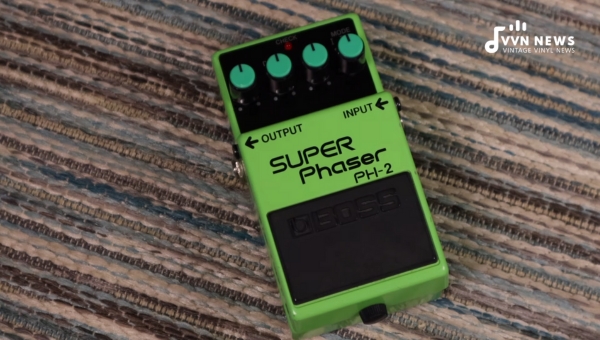
Also belonging to the modulation effects category like chorus, a phaser creates sweeping peaks and troughs in your guitar’s frequency spectrum.
It splits your guitar signal into two, changes the phase of one portion, and then combines them back together again. A spacey “whoosh” akin to a jet plane flying overhead or a starship zooming off into infinity!
Check out Eddie Van Halen’s use of phaser in “Ain’t Talkin’ ‘Bout Love” for an immersive experience.
Flanging
Flanging will change how you think about sound manipulation! This effect creates what’s usually described as an “otherworldly swirling”, making it seem like it’s continuously moving upwards or downwards.
Flanging replicates two identical signals mixed while one is slightly delayed at varying speeds.
The output seems like ‘comb-filtering’, resulting in some frequencies being reinforced while others get canceled out—thus creating that unique ‘whoosh’ similar to phaser but more pronounced.
For flanging in action, turn up “Barracuda” by Heart for some vintage flange-tone-inspired energy!
From adding slight seasoning to heavily changing our music persona entirely – these gadgets operate at our behest acting as our sonic avatars – empowering us to push creative barriers further!
Tremolo
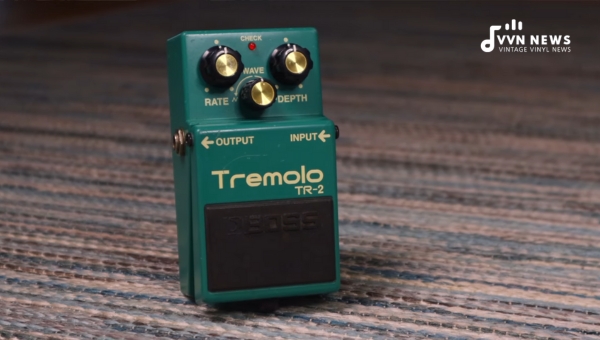
Tremolo, a beautifully expressive effect, produces a wobbly, trembling impact by altering the volume of your sound at a regular rate. Think about the vintage sounds from the 60s; that’s tremolo for you.
It works by modulating (changing) the amplitude (volume) of your signal at different speeds and intensities.
The two main controls on a tremolo pedal usually are Rate (changing how fast the volume modulates) and Depth (adjusting how extreme the volume change is).
This allows players to go from subtle shifts that add movement to their tone, to full-on helicopter-chop stutter effects.
Also Read: What Is Sidechaining? [5 Best Sidechain Compression Plugins]
Dynamic Range Compression
A dynamic range compressor, often just referred to as a compressor, acts like an automatic volume adjuster. It makes quiet parts louder and loud parts quieter, resulting in an evened-out sound that’s perfect for both live performances and studio recordings.
Typically, compressors feature knobs for adjusting ratio (how much compression is applied), threshold (at what point compression kicks in), attack(time it takes for compression to start once threshold has been reached), release(time for compression to end after level falls below threshold), and makeup gain(volume boost to compensate for lost signal strength due to compression).
Loop Pedals
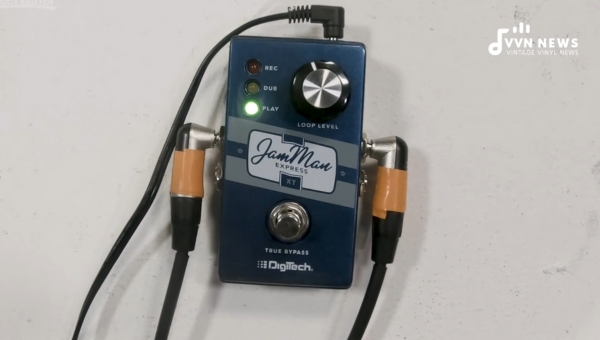
Loop pedals, or loop stations as they’re sometimes known, allow you to record segments of playing and then play them back in repeating loops.
Their purpose varies: some musicians use looping stations with multiple separate channels allowing them to play back separate loops simultaneously or individually; others look for simplicity first.
Loopers help guitarists lay down rhythmic foundations then solo over top, or even layer multiple harmonies enriching their compositions.
Vibrato
The vibrato pedal is often described as the sonic equivalent of the visual effect of watching moving water.
This unique guitar pedal creates a warped, wavy sound, fluctuating in both pitch and volume. The effect is subtle, but it can make your guitar’s tone feel more alive and dynamic.
Used sparingly, Vibrato can lend a sense of motion and depth to chords. When cranked up, it gives you a swirling, Leslie speaker-like effect that’s full of character.
The parameter knobs on vibrato pedals usually include rate (speed of waves), depth (intensity), and level (mix). With these controls, you can go from a gentle sway to rampant tidal waves of sound!
Ibanez Tube Screamer
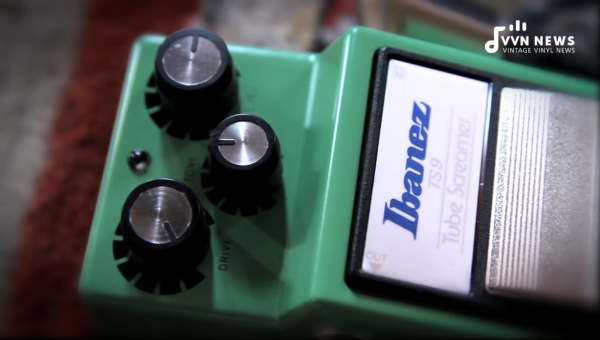
The Ibanez Tube Screamer is an iconic piece of gear! Known for its mid-range growl, this green beast has found its way onto countless beloved blues tracks. Some regard it as the Holy Grail of overdrive tones.
Tube Screamer’s genius lies in its sophisticated simplicity. It subtly clips your tone providing rich harmonics while retaining the integrity of your original sound.
The combination of drive (amount of distortion), tone (brightness/darkness), and level controls on this pedal allows you to hone just about any shade of grit you desire.
Also Read: 20 Best Eq Pedals For Perfect Tone [Shape Your Guitar Sound]
Volume Pedal
One cannot underestimate the role of dynamics in music creation; that’s where a volume pedal comes in handy. As indicated by its name – a volume pedal simply regulates your guitar’s loudness.
From creating emotional swells to achieving precise gain control without needing to touch your guitar’s knob, a volume pedal becomes an essential accessory once you start exploring dynamics.
By placing these pedals at different points in the signal chain they provide either master volume control or adjust the gain for individual effects.
Ibanez TS9 Tube Screamer
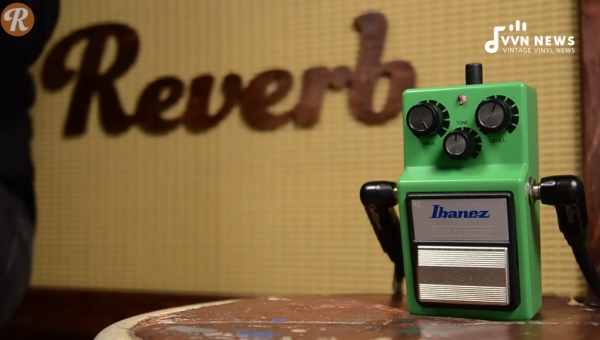
Enter the Ibanez TS9 Tube Screamer, the beloved sibling of the original TS-808 Tube Screamer but with slightly sharper mid-range characteristics.
It offers smooth overdriven tones preserving original signal transparency ideal in blues or classic rock scenarios.
The TS9 exhibits a creamier tone upon boosting higher frequencies due to subtle differences from TS-808 in circuitry design.
True bypass switching ensures pure tone when disengaged which means no tonal coloration when switched off just pure unadulterated guitar sounds.
BOSS DS-1
The BOSS DS-1 truly is an icon in the world of guitar pedals. Released in 1978, it became renowned for its hard-edged distortion sound with aggressive dynamics.
For many guitarists, it’s a go-to for reliable, robust, and versatile distortion. This compact pedal offers controls for tone, level, and distortion assuring a variety of derived tones.
Known famously for its use by guitar legends like Joe Satriani and Kurt Cobain, this pedal indeed has carved a niche in producing rock tones.
BOSS BD-2 Blues Driver
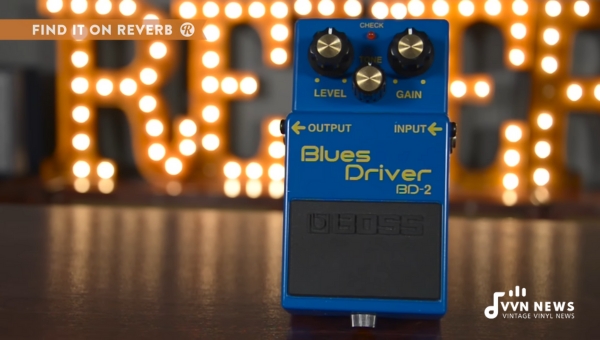
BOSS BD-2 Blues Driver is famous for its warm overdrive and emotive distortion.
It replicates the feel of a vintage tube amp, providing subtle gritty blues tones to wild screaming sounds that reflect your unique playing style hence known as the “touch-sensitive” drive effect.
The three knobs (Level, Tone, Gain) make it incredibly easy to dial perfect blues tones making it an ideal choice from the subtlest blues to the high-gain rock scenarios.
MXR Phase 90
The MXR Phase 90 takes you on a journey into space with its rich phasing effects – from slow-shifting swoosh to rapid rotary speaker-type sounds.
With just one knob controlling the speed of the phase-shifting effect, being user-friendly is unquestionably one of its many impressive features.
Eddie Van Halen was amongst many other legends giving the MXR Phase 90 an iconic status in rock music.
Octave effect
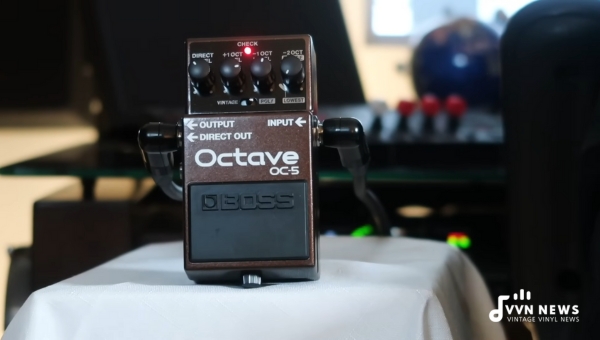
An octave pedal automatically plays the note you’re playing but either an octave up or down or both. The upper octave edge adds sparkle to lead lines while applying an octave below fattens your tone creating a dual guitar effect.
Creating fat bass lines on the go or interesting harmonics when jamming solos are amongst a few of what Octave pedals promise to offer.
One footswitch can open various creative possibilities, making octave pedals extremely versatile tools in composing unique soundscapes.
Pitch Shifter
A pitch shifter is a guitar pedal that raises or lowers your guitar’s output by a certain number of semitones, allowing you to play in any key without changing your finger position.
This tool is particularly commendable when you want to match the original range of a vocal melody on your guitar, create harmony parts, or even play an unusual chord voicing out of reach on your fretboard.
Some models let you specify the harmonic relationship (such as fifth or octave) rather than the absolute change in pitch.
The best pitch shifter pedals are the ones that maintain the natural tone of your guitar while offering precise shifts and ample flexibility for creative implementation.
Also Read: 22 Best Looper Pedals [Step Up Your Live Performances]
Live Looping
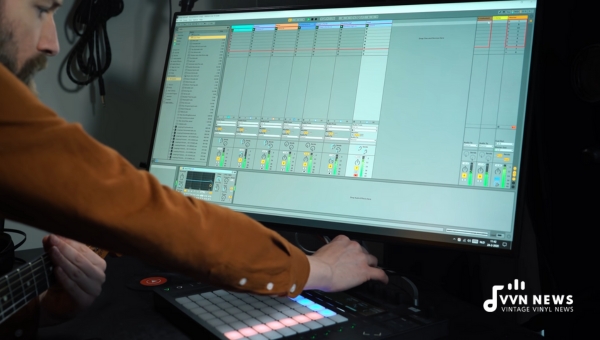
A looper pedal empowers you to record a portion of your playing and then playback that recording repeatedly.
This effect lets you lay down rhythm guitar parts so what is initially a single-note line can evolve into thick harmonic textures or complete songs over time.
Some looper pedals also provide features such as overdubbing, which allows layering multiple loops on top of one another, reverse looping, and even altering playback speed.
The quick creation of backing tracks and experimentation with complex soundscapes- perfect for both practice sessions and live performances!
Tuner Pedal
Though not an effect, a good tuner pedal holds crucial importance on any pedalboard.
A tuner pedal allows you to tune on-stage quickly, accurately, and without interruption making sure all guitars are pitch-perfect before you start playing.
Most popular models come with “true bypass” meaning when it’s off, it won’t affect your tone at all and many have “mute” modes so no one can hear you tuning.
Visual accuracy is key here the display should be easy to read in all light situations.
Overdrive Pedal
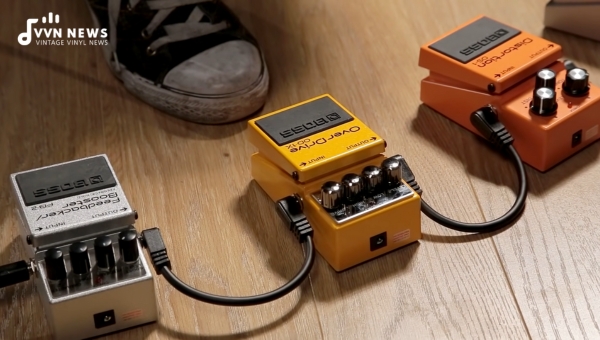
An overdrive pedal gives that extra push to drive an amp harder and infuse life into solos. It’s like stepping on the gas in a sports car!
Unlike distortion pedals that boil signals away into harmonic content, overdrive maintains more characteristics of the original signal but with added warmth and crunch elements.
They serve excellent for creating organic-sounding crunch tones through any amplifier while providing a transparent boost fully preserving every nuance from your guitar’s tone to your picking dynamics.
Their usefulness extends beyond solely adding dirt; these pedals have often been used effectively as clean boosts by setting their gain low and volume high subtly enhancing overall sound without radically altering tonal balance.
Choosing the Right Guitar Pedal for Your Sound
Determining the perfect pedal effects for your sound is similar to assembling a puzzle; each piece adds color and shape to the bigger picture.
There are a few steps that can assist in this process, let’s explore these practical tips.
Trading Simplicity for Variety
Diverse pedals often offer more flexibility but come at the cost of complexity. For instance, multi-effects units offer myriad effects in one package but often result in sophisticated structures that can be challenging to program.
Identifying Your Signature Sound
Some guitarists prefer an organic clean tone while others might seek heavy distortion. Identifying your ideal sound will guide you toward the correct guitar pedal type.
Listen to artists who inspire you and try to break down their set-up. This will help you understand what kind of pedals create various sounds.
Striking a Balance
While distortion or delay might be essential for certain genres, moderation is key to creating an excellent blend. Going overboard with effects can often overwhelm rather than enhance your music.
Choosing your guitar pedal boils down to personal preference and experimentation.
Don’t hesitate to explore various options on the market and find what suits your style best.
Also Read: How Much Should You Charge For Music Lessons? [Fair Rates Guide]
FAQs About Guitar Pedals
What is the purpose of a guitar pedal?
A guitar pedal, also known as an effects pedal, is used to alter the sound of your guitar. It can change the tone, pitch, echo, and other attributes of the sound produced by a guitar.
How many types of guitar pedals are there?
There are several types of guitar pedals such as distortion, delay, reverb, chorus, and more. Each type delivers unique effects to create varied tonal landscapes.
Can you use multiple guitar pedals at once?
Yes, you can use multiple pedals at once. Pedals can be arranged in a specific order known as a ‘signal chain’ to create layered effects.
What does a distortion pedal do?
A distortion pedal saturates your guitar’s signal to give it a gritty and fuzzy sound. This effect is often used in rock music for its powerful impact.
Is reverb or delay better for guitars?
Reverb and delay both serve different purposes. Reverb adds depth and sustains the sound while delay gives an echo effect. Both can enhance your music when applied properly; it just depends on the song and genre.
Conclusion
Your journey in the world of guitar pedals is only beginning. There are hundreds out there waiting to be discovered, each one offering its unique signature and distinct color to your sonic palette.
Remember that these tools, whether a distortion pedal or a reverb, ultimately serve the purpose of boosting your musical storytelling.
Keep exploring and experimenting until you find those tones that truly sing your sentiments because in music as in life – it’s all about expressing yourself in your unique way. Happy playing!
